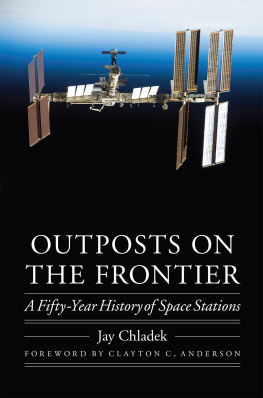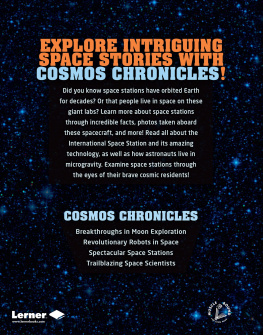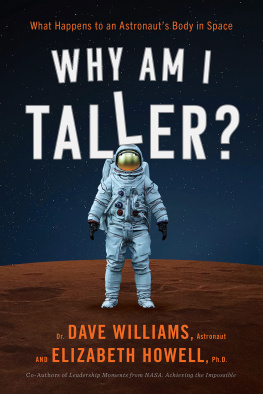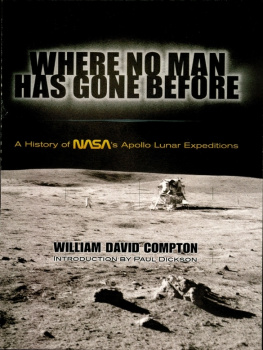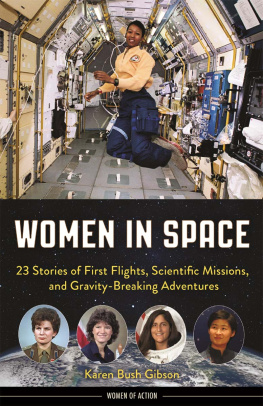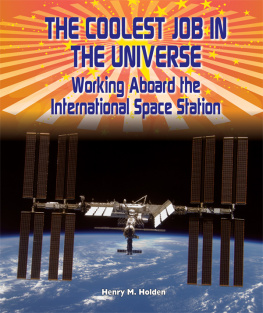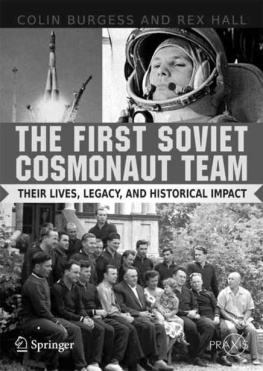
From Salyut, Skylab, and Mir to the International Space Station: with each passing orbit we learn and benefit from accumulated data and ongoing studies not only relating to our precious, fragile environment but the human physiology and possible long-term consequences for astronauts on protracted space missions beyond Earth orbit. This book highlights the incredible history of the orbiting vehicles that enable us to continue that crucial work: the space stations.
Duane Graveline (19312016), NASA scientist-astronaut and author of Surly Bonds and From Laika with Love
Essential reading for anyone wanting to look beyond our early crewed space shots into the fascinating realm of a half century of international science missions aboard orbiting space laboratories.
Jonathan Ward, author of Rocket Ranch and Countdown to a Moon Launch
I am personally delighted that Jay Chladek has written such a well-researched and authoritative book on the global history of space stations for the outstanding Outward Odyssey series. It will be a very welcome addition to the series and my bookcase.
Manfred (Dutch) von Ehrenfried, NASA flight controller (196168) and support contractor to the Space Station Program Office (198496)
Team spirit and solidarity: these are the fundamentals for any successful multiperson spaceflight. I once trained hard for a mission to the Salyut 7 orbiting space laboratory, and I know that working aboard any space station, particularly the International Space Station, depends on a truly cooperative effort. This book will give you insight to that wonderfully productive and beneficial international history.
Lt. Col. Patrick Baudry, French Air Force (ret.), Airbus senior test pilot and STS-51G cosmonaut and astronaut
Outposts on the Frontier
Outward Odyssey
A Peoples History of Spaceflight
Series editor
Colin Burgess
Outposts on the Frontier
A Fifty-Year History of Space Stations
Jay Chladek
Foreword by Clayton C. Anderson
University of Nebraska Press | Lincoln & London
2017 by the Board of Regents of the University of Nebraska
Cover designed by University of Nebraska Press; cover image courtesy NASA .
All rights reserved
Library of Congress Control Number: 2017940995
The publisher does not have any control over and does not assume any responsibility for author or third-party websites or their content.
To Alice Anderson
and
James M. Busby
One helped to teach future generations, while the other helped them to learn the history of the future
Contents
I have known Jay Chladek for about a decade. Essentially acquainted through the Strategic Air Command and Aerospace Museum, located just off Interstate 80 in my home town of Ashland, Nebraska, Jay and my mother Alice were frequent attendees at various museum events. Recognizing in each other in a simultaneous zeal for space, along with an overwhelming desire to occupy front-row seats (Mom didnt want to look at the back of Jays head), they continued to strike up conversations at book signings and lectures, most notably those by NASA astronauts. It was through their developing friendshipfurther enhanced by my standing as Nebraskas first and only astronautand the completion of my first mission to the space station in 2007 that we would meet and ultimately become friends.
As an astronaut, I had the wonderful privilege of flying in space... twice. While the hours spent orbiting Earth were memorable, far more hours were spent between the countries of the United States and Russiakey training locations for any astronaut destined for the International Space Station ( ISS ). How interesting that during the time of my training and spaceflights, the United States and Russia would work together as space-faring partners rather than competitors. These were two prideful space programs, the envy of the entire world. Driven almost solely by the enormous number of dedicated people toiling behind the scenes, they were all working together, half a world apart. They had a singleand remarkably easy-to-stategoal: the safe delivery and return of humans to outer space, including protecting and sustaining these beings known as astronauts and cosmonauts as they lived and worked side by side in space for months at a time. A goal not so easy to execute, these prideful nations were faced with political and financial woes on the ground, catalyzed by the oft-antagonistic relationship of the upper levels of their respective governments.
I was given a remarkable gift: the chance to see things from both sides. Working at NASA from the very early days of the space shuttle program, before one day joining the astronaut corps and flying in space, I was a ticket-holding spectator of sorts, watching two rival superpowers come together through a program we called the ISS .
Jays book, Outposts on the Frontier, chronicles a large part of this historical transformation. Much as he does while building intricate scale models of flying and space vehicles, Chladek provides the reader with intricate, precise details, covering nearly everything happening in space over the past fifty years. Analogous to the tight-fitting pieces and in-depth paint jobs of one of his model projects, Jay gives the astute reader a deep, interlocking look behind the scenes, clearly illustrating the processes that allowed the program to fall into place. In Jays own words, It is kind of like a big tapestry of international developments... the relationship between Russia and America seeming like an episode of The Odd Couple, with the European Space Agency, Canada, and Japan coming along for the ride. Everyone seems to be working together because they dont have the ability to go it alone anymore.
You will put down this book a much smarter reader than the day you started!
Live long... and prosper!
Clayton C. Anderson
When I was first approached to write this book in late 2007, the task seemed like a relatively easy one that would only take maybe three years at most. I jumped at the challenge, to write my first space-history book. Little did I know what I was in for, but honestly I wouldnt change anything for the world. It has been quite an adventure.
As I write this, it has been nearly a decade since it all began, and finally the fruits of my labor now sit in your hands. The work took longer than expected, but the story was able to benefit from recent events, specifically the decision by the National Reconnaissance Office to declassify portions of the Manned Orbiting Laboratory program. So I would say the wait was worth it.
I have many people to thank for their assistance, the first one being Colin Burgess, who sent me that first email all those years ago asking me to take on this project. Another shout-out goes to Robert Pearlman, the creator and moderator of collect SPACE .com, who I am pretty sure provided some input about me to help influence Colins decision. Sincere thanks also go to the University of Nebraska Press not only for approving me as Colins choice but also for continuing to expand the Outward Odyssey book series. Even if I hadnt been asked to personally take part in it, I still would have every other book sitting on my shelf at home, as the work done by the other authors in the series has been first-rate.
I also extend thanks to the tireless work of the media-relations people at both the Johnson Space Center and the Kennedy Space Center, who helped me to obtain the proper credentials and access to the facilities. One person in particular I am eternally indebted to is Gayle Frere. She helped to schedule and coordinate my interviews at the Johnson Space Center on multiple occasions and did what she could to accommodate my wishes, even though I was a relatively unknown author at the time.

